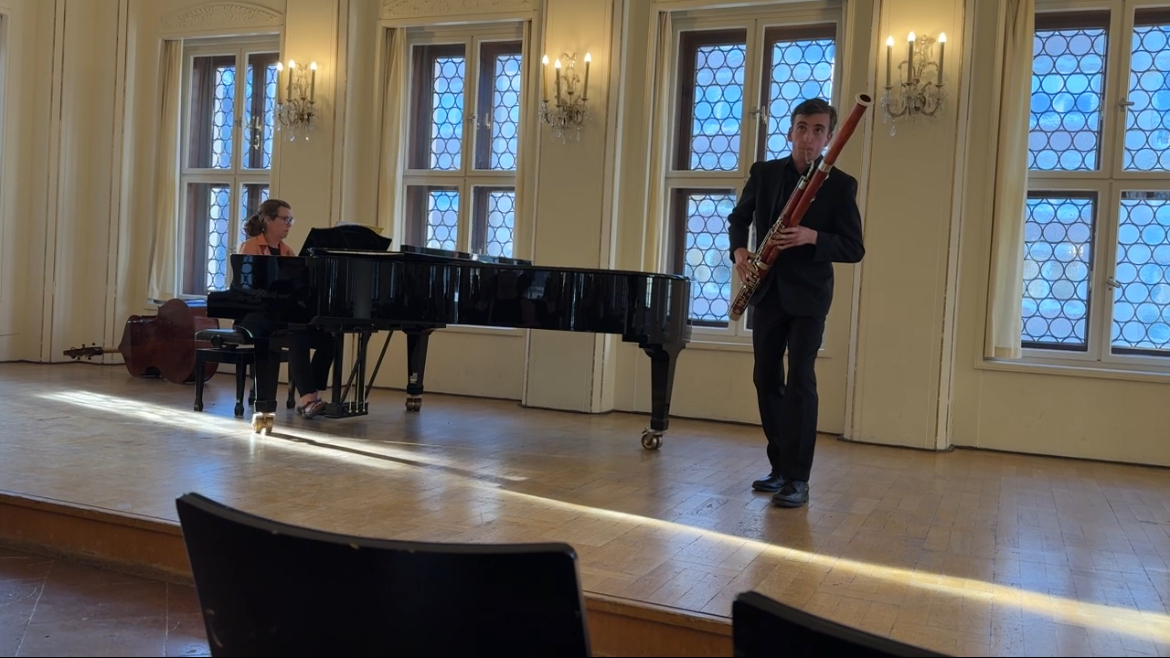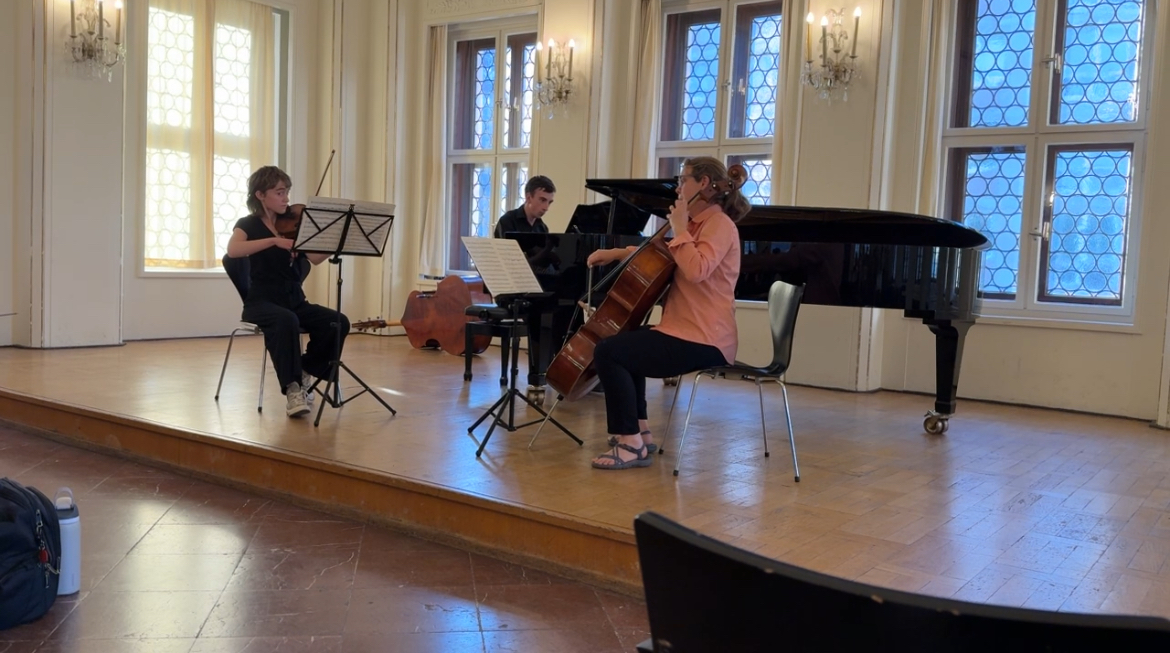

Our final performance at the Alte Börse was definitely the part of the program I was most looking forward to. As a music major who’s been in love with performing for practically my whole life, getting the opportunity to perform international in a setting unlike any I’ve ever played in was incredible! I especially enjoyed performing my own solo on bassoon, and getting to play in a piano trio, both of which I had not been able to do since high school.
The solo I played was Bach’s Sonata for Viola da Gamba No. 2 in D Major, first movement. This was a particularly interesting choice—Bob Wagner, the bassoon professor at Princeton, suggested it for me. When I first heard about it, I was intrigued, but also admittedly a little hesitant. I had originally wanted to play a solo written for bassoon, but I realized there’s probably not a lot of bassoon repertoire from Bach’s time. I figured I’d give the sonata a shot, and I’m very glad I did! Listening to several different recordings of the piece, I grew to love it. Especially the opening adagio section, it’s a beautiful way to introduce the piece, with a nice peaceful melody that prepares you for the soon-to-come allegro melody. Before coming to Leipzig, I had not really been a fan of Bach’s music. As a pianist, I had grown up learning his inventions, which I think were a little too… musically simple for me (I’m not sure if that’s exactly the phrase I’m looking for…). I like music with several parts, and many different overlapping aspects to it. But when I played the inventions, I was also quite young, so I didn’t have a great understanding of the true difficulties of them. I hadn’t been introduced to much of Bach’s instrumental music, which my time in Leipzig made me fall in love with!
I played a transcription of the piece for cello on bassoon, so it was quite a challenge, mainly with figuring out where to breathe. Luckily, a close friend of mine from high school is an incredible cellist, and we would always play cello duets together, so I have a lot of experience with playing music not necessarily meant to be played on an instrument that requires breathing. Once I had figured that out, it was so much fun! I’ve always loved faster sections, and it’s very satisfying figuring out how to make those technically faster melodies also have a musical, emotional aspect to them. Once I was able to achieve that, I really grew to love the piece (and Bach in general)!
(Shoutout to Ruth for accompanying me!!!)
I also played piano in Clara Schumann’s Piano Trio in G Minor, Op. 17, third movement. This was also so much fun, as I had heard about Clara Schumann but never really heard any of her music, only that of Robert. Just with the opening 8 measures of solo piano, I played it once and immediately knew I was missing out on a huge selection of music that has been unfortunately pushed down in society throughout history. With the opening melody, we are brought into a world of peace and calm, ready to sit back and relax and enjoy the beautiful nature of the world.
Clara Schumann wrote this piece at the age of 25 in Dresden, in 1846. When the trio was first rehearsed, she wrote in her diary a statement I’ve come to relate with over this past semester in Professor Dennehy’s MUS106 class, which was a great intro to composing: “There is nothing greater than the joy of composing something oneself, and then listening to it.” The beauty of this trio and the joy that C. Schumann felt in composing it inspires me to both explore more music of her and similar composers of the period, and compose more music myself!
My time in Leipzig introduced me to a new era of music that I was previously not very familiar with. Since this is my last blog post, I’ll take this time to say: thank you to Wendy and Ruth for teaching us the history behind all this beautiful music. Going forward, I hope to take that new knowledge and use it to expand my repertoire, and grow even more as a musician. This was a wonderful experience, one I will treasure for many years to come.